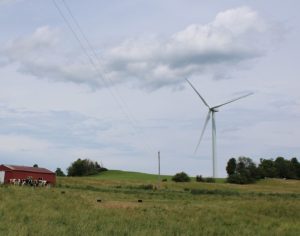UTICA — The 101-year-old Utica Zoo, located at 1 Utica Zoo Way in the city, has been updating parts of its facilities in recent months, and will continue to do so, as it seeks accreditation from the Association of Zoos and Aquariums (AZA). Projects completed include the construction of a new quarantine building, installation […]
Get Instant Access to This Article
Become a Central New York Business Journal subscriber and get immediate access to all of our subscriber-only content and much more.
- Critical Central New York business news and analysis updated daily.
- Immediate access to all subscriber-only content on our website.
- Get a year's worth of the Print Edition of The Central New York Business Journal.
- Special Feature Publications such as the Book of Lists and Revitalize Greater Binghamton, Mohawk Valley, and Syracuse Magazines
Click here to purchase a paywall bypass link for this article.
 UTICA — The 101-year-old Utica Zoo, located at 1 Utica Zoo Way in the city, has been updating parts of its facilities in recent months, and will continue to do so, as it seeks accreditation from the Association of Zoos and Aquariums (AZA).
UTICA — The 101-year-old Utica Zoo, located at 1 Utica Zoo Way in the city, has been updating parts of its facilities in recent months, and will continue to do so, as it seeks accreditation from the Association of Zoos and Aquariums (AZA).
Projects completed include the construction of a new quarantine building, installation of a new natural gas-powered generator, the repaving of major parts of the zoo, and the conversion of all light bulbs and light fixtures to LEDs to improve energy efficiency, according to a zoo news release.
The quarantine building, which is situated behind the Wildlife Building, cost $260,000, and was funded in part by a $100,000 grant from the Community Foundation of Herkimer and Oneida Counties, Inc., according to the release. The rest was covered by zoo assets that had been set aside for the project, according to the zoo’s communications coordinator, Mike Beck.
The quarantine building is used for new animals upon their arrival at the zoo. Incoming animals are required to undergo a minimum of 30 days in the facility to ensure they aren’t infected with or carrying any sickness that could threaten the rest of the animals. It is also used for other animals that become ill, to prevent the sickness from spreading.
It is big enough to house large animals, and also has sections intended for smaller species. The floors of the building can be heated if necessary.
In repaving major areas in the zoo, it seeks to improve mobility for visitors with strollers or wheelchairs, two of which the zoo says it will purchase next spring.
The front of the Wildlife building is one area that was repaved, as well as the front of the Children’s Zoo. The total cost of the paving was about $100,000, and was funded in part through a $65,000 grant from the state, the release says. Assemblyman Anthony Brindisi, who represents the 119th Assembly District, in which Utica is located, helped secure the grant.
The paving was also funded with the help of a $25,000 grant from M&T Bank’s (NYSE: MTB) donor-advised fund at the Community Foundation of Herkimer and Oneida Counties, according to the release.
The new natural-gas powered generator, was installed to provide backup power for Reptile Hall, and the zoo’s walk-in freezer and refrigerator. In the past, when power was lost, the zoo was forced to rent a refrigeration truck to save its stores of animal food, which include fish, meat, fruits and vegetables, and at any given moment are worth thousands of dollars, the zoo says. The zoo spends about $21,000 annually on fish for its three California sea lions, alone.
The $10,000 generator was paid for with an anonymous donation.
The zoo also converted more than 300 light fixtures to more energy-efficient LED models, and swapped nearly 400 other light bulbs with LED bulbs. The LED variants are supposed to last about five times longer than the antiquated, high-wattage fluorescent lights it was previously using, which should save the zoo both time and money.
In addition to their lower energy consumption, LED lights are also friendlier to the environment because of the ease with which they can be recycled, and their lower emission of carbon dioxide, a greenhouse gas, the zoo says. The LED conversion should reduce the zoo’s carbon-dioxide emissions by more than 74,000 pounds annually.
Payment for the LED conversion will come out of the Utica Zoo’s energy bill savings. After that, the zoo says it will recoup about $7,000 annually in energy bill savings.
The LED conversion was conducted by Potentia Management Group, an energy management consulting firm based outside of Utica, in the town of Whitestown.
AZA accreditation
“Each project completed gets us one step closer to being accredited by the AZA,” Andria Heath, executive director of the Utica Zoo, said in the release. “We are very thankful for the strong partnerships with government leaders and philanthropic individuals within the Mohawk Valley.”
The zoo had been struggling financially in the 2000s, and lost its accreditation with the AZA in 2005, according to Beck. Earning that back will help it earn more respect in the zoo community, and improve its capability to bring in more types of animals, including endangered species, he explains.
One major project on the zoo’s docket is completing renovations to the primate building. The facility was built back in 1927, and still features the old-style cages with metal bars in many exhibits, which Beck acknowledges are not aesthetically appealing and contributed to the zoo losing its AZA accreditation 10 years ago.
The zoo had removed the bars and remodeled the interior of several of the exhibits in the early 2000s, but when the zoo fell on hard times, the work was never completed, says Beck. That half of the building is currently not visible to the public.
Fundraising efforts are expected to launch in December, as the zoo hopes to raise a total of $350,000 to cover the costs of the primate building renovations. It has already raised $55,000 from a handful of donors who were shown the static renovations that the zoo wants to complete. Glass protectors still need to be installed in those exhibits, and the HVAC systems need to be redone, Beck adds.
The annual deadline for accreditation submissions to the AZA is next March, Beck says. The Utica Zoo does not plan on making a submission in 2016 because it intends to wait until after the primate building renovations are complete, he explains.



